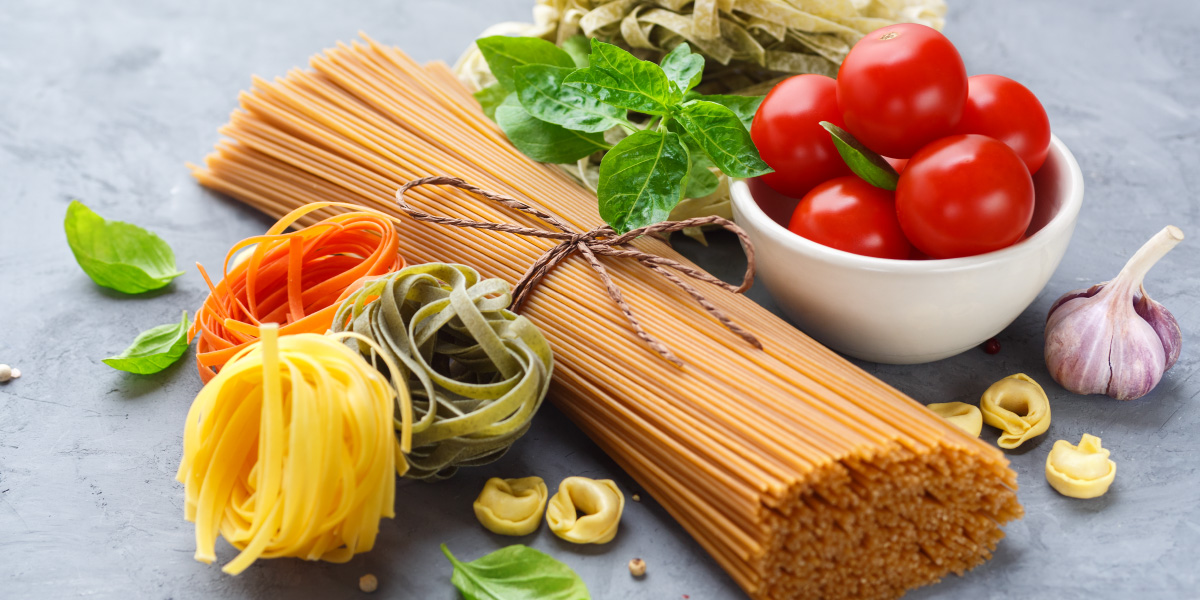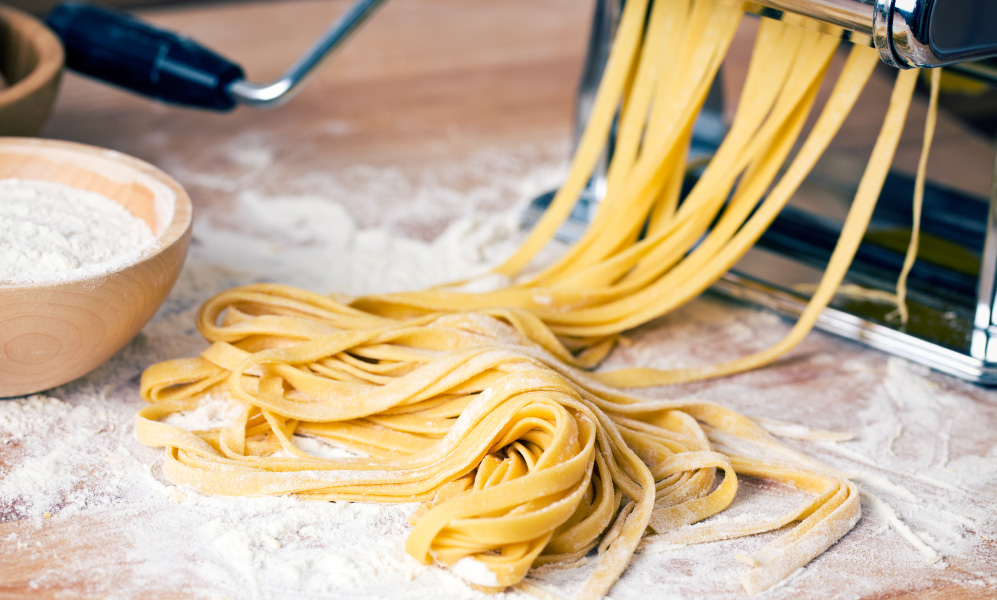The Ultimate Guide to Eating Hummus Like a Pro
If you think hummus is just a dip, you’re in for a delightful surprise. This creamy, flavourful delight is more versatile than most people realise,
Fresh vs dry pasta – the difference is stark and easy to point out. Here’s some help.
Fresh pasta is entirely different from dry pasta. Neither is the other’s variant. You wouldn’t bring fresh pasta to hang over a food dehydrator to make dried pasta. And dry pasta is also not the fresh pasta that went stale.
So, what is the difference between fresh and dry pasta?

Let’s start with the ingredients used to make the two varieties. Dried pasta is typically made from ground semolina flour, water, and salt. The most common examples of long, dried pasta include spaghetti, rigatoni, bucatini, and linguine. There is no egg, which is the main difference.
On the other hand, fresh pasta is made from dough prepared of egg, flour (usually all-purpose or “00” high-gluten), and additional water. Common examples of fresh pasta include vermicelli, capellini, tagliatelle, fettuccine, and pappardelle.
Even in terms of texture and cooking styles, there is a difference between fresh and dry pasta. Dry pasta has a rough texture and a firm structure that help it hold up flavourful Ragu sauces and hearty dishes like soups and casseroles. Fresh pasta is far smoother, more tender, and delicate compared to its dry counterpart. This texture makes it perfect for dairy- and cream-mixed sauces.
Dry pasta can take up to 10 minutes or even more to boil and soften up. Fresh pasta, being delicate, cooks in as low as 2 to 3 minutes. Most kinds of dry pasta also double in shape when cooked. Most types of fresh pasta don’t. Although, fresh pasta can easily break and fall apart if overcooked.
You can store dry pasta at room temperature almost indefinitely, while fresh pasta needs refrigeration. The latter can also be frozen to make it last longer. What’s more, it cooks straight from the freezer without any need for defrosting.
Fresh pasta is seen as the fancier ingredient, which warrants a higher price tag, while dry pasta has been a cheap staple of households. However, you will be able to find high-end forms of both varieties, as well as their cheaper supermarket versions.
This pasta is your to-go choice when you want to create a chewy and toothsome al dente dish. The chief calling card, being its firm, rough texture, makes it an excellent pick when you are working with tomato sauce, meat, peas, loads of chopped veggies, and anchovies. Barilla’s spaghetti and other pasta variants is a popular dry pasta brand in Malaysia.
Thumb-rule: Use dry pasta when you are working with hearty, oil-based sauces.
Contrary to dry pasta, fresh is not intended to be served al dente. Instead, you have to prepare it till it gets tender and velvety to bite. Such a delicate and melt-in-the-mouth texture makes it perfect to pair with sauces that are just as smooth – the ones with butter or whole milk as their base. You guessed it! Alfredo or carbonara.
Thumb rule: Choose fresh pasta when you are working with creamy, dairy-based sauces.

Keeping the hard-lined differences aside, if you wish to create a sort of al dente pasta but with a fresh-pasta variety, that is possible too. Use pappardelle. It goes wonderfully with heavy, meaty Bolognese sauce. The catch being, a good Bolognese concocts simmering whole milk in the tomato-based meat sauce. And you know by now how beautifully dairy elements and fresh pasta pair, thanks to their rich, thick consistency.
Keeping in mind the ingredients and texture, you might wonder if fresh pasta is better for you. Well, it’s complicated.
While nutrition value varies depending on what variety of pasta and ingredients you use, fresh pasta generally has more fat content and cholesterol than dry. It is because of the use of eggs.
Dry pasta has more carbohydrates. It owes the carbs to the type of grain used and changes that occur during the cooking process. The more water the pasta absorbs, the fewer calories it has.
Although fresh pasta may be lower in calories than dried, it also offers less fibre. In short, neither of the two varieties is necessarily healthier than the other. It all depends on the dish you are cooking, the sauces you are using, other ingredients, and your particular diet.
If you’re interested to find out which types of pasta are the most popular in Malaysia, check out our article here.
If you think hummus is just a dip, you’re in for a delightful surprise. This creamy, flavourful delight is more versatile than most people realise,
Fellow coffee lovers in Malaysia are embracing a convenient method to enjoy their favourite coffee shop quality drinks at home: coffee capsules. These pre-packed pods
Healthy snacking is crucial for a balanced diet, especially for weight management in Malaysia. While many Malaysians enjoy snacks, not all are healthy. Traditional options
Malaysia’s coffee culture is flourishing, with coffee enthusiasts seeking high-quality brews that rival café experiences. Among the rising trends, coffee capsules have emerged as a
Tel: +603-5569 2318
Fax: +603-5569 2208
Email: hello@sanglafoods.com
Lot 4, Jalan Peguam U1/25A, Hicom Glenmarie Industrial Park,
40150 Shah Alam, Selangor, Malaysia